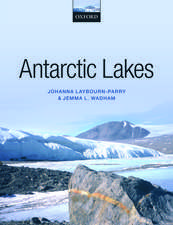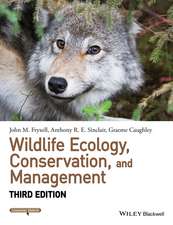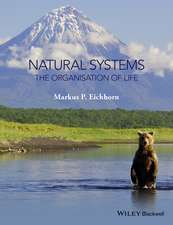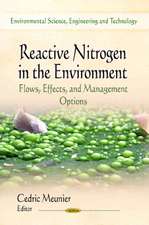Biogeography and Ecology of New Guinea: Monographiae Biologicae, cartea 42
Editat de J.L. Gressiten Limba Engleză Paperback – 31 dec 2011
Din seria Monographiae Biologicae
- 24%
 Preț: 2612.45 lei
Preț: 2612.45 lei - 18%
 Preț: 948.92 lei
Preț: 948.92 lei - 15%
 Preț: 648.74 lei
Preț: 648.74 lei -
 Preț: 397.59 lei
Preț: 397.59 lei - 28%
 Preț: 91.90 lei
Preț: 91.90 lei -
 Preț: 379.86 lei
Preț: 379.86 lei -
 Preț: 388.34 lei
Preț: 388.34 lei -
 Preț: 414.91 lei
Preț: 414.91 lei -
 Preț: 395.47 lei
Preț: 395.47 lei -
 Preț: 389.49 lei
Preț: 389.49 lei -
 Preț: 401.24 lei
Preț: 401.24 lei -
 Preț: 394.71 lei
Preț: 394.71 lei -
 Preț: 405.99 lei
Preț: 405.99 lei -
 Preț: 425.84 lei
Preț: 425.84 lei -
 Preț: 381.21 lei
Preț: 381.21 lei -
 Preț: 389.56 lei
Preț: 389.56 lei - 18%
 Preț: 1833.65 lei
Preț: 1833.65 lei - 18%
 Preț: 1230.35 lei
Preț: 1230.35 lei - 18%
 Preț: 1027.08 lei
Preț: 1027.08 lei -
 Preț: 399.67 lei
Preț: 399.67 lei - 18%
 Preț: 2493.72 lei
Preț: 2493.72 lei -
 Preț: 417.59 lei
Preț: 417.59 lei -
 Preț: 404.89 lei
Preț: 404.89 lei - 20%
 Preț: 557.45 lei
Preț: 557.45 lei -
 Preț: 418.76 lei
Preț: 418.76 lei -
 Preț: 408.37 lei
Preț: 408.37 lei - 15%
 Preț: 650.69 lei
Preț: 650.69 lei - 15%
 Preț: 652.31 lei
Preț: 652.31 lei -
 Preț: 395.37 lei
Preț: 395.37 lei - 18%
 Preț: 1232.26 lei
Preț: 1232.26 lei - 15%
 Preț: 637.59 lei
Preț: 637.59 lei - 18%
 Preț: 1231.95 lei
Preț: 1231.95 lei - 18%
 Preț: 1226.90 lei
Preț: 1226.90 lei - 15%
 Preț: 658.22 lei
Preț: 658.22 lei -
 Preț: 353.75 lei
Preț: 353.75 lei - 18%
 Preț: 1224.36 lei
Preț: 1224.36 lei -
 Preț: 386.22 lei
Preț: 386.22 lei - 20%
 Preț: 723.20 lei
Preț: 723.20 lei - 18%
 Preț: 1228.62 lei
Preț: 1228.62 lei - 18%
 Preț: 945.30 lei
Preț: 945.30 lei - 18%
 Preț: 1231.64 lei
Preț: 1231.64 lei - 15%
 Preț: 633.68 lei
Preț: 633.68 lei - 20%
 Preț: 572.08 lei
Preț: 572.08 lei - 18%
 Preț: 1844.54 lei
Preț: 1844.54 lei -
 Preț: 386.61 lei
Preț: 386.61 lei
Preț: 652.49 lei
Preț vechi: 767.63 lei
-15% Nou
Puncte Express: 979
Preț estimativ în valută:
124.85€ • 130.71$ • 103.31£
124.85€ • 130.71$ • 103.31£
Carte tipărită la comandă
Livrare economică 05-19 aprilie
Preluare comenzi: 021 569.72.76
Specificații
ISBN-13: 9789400986343
ISBN-10: 9400986343
Pagini: 544
Ilustrații: VI, 983 p.
Dimensiuni: 155 x 235 x 35 mm
Greutate: 0.75 kg
Ediția:1982
Editura: SPRINGER NETHERLANDS
Colecția Springer
Seria Monographiae Biologicae
Locul publicării:Dordrecht, Netherlands
ISBN-10: 9400986343
Pagini: 544
Ilustrații: VI, 983 p.
Dimensiuni: 155 x 235 x 35 mm
Greutate: 0.75 kg
Ediția:1982
Editura: SPRINGER NETHERLANDS
Colecția Springer
Seria Monographiae Biologicae
Locul publicării:Dordrecht, Netherlands
Public țintă
ResearchCuprins
One: General and Physical Background.- 1. General introduction.- 2. Geology of New Guinea.- 3. Pleistocene and present-day glaciations.- 4. Landforms and landform development.- 5. The soils of New Guinea.- Two: Man and His Impact on the Environment.- 1. Biological exploration of New Guinea.- 2. Physical anthropology, linguistics and ethnology.- 3. Human ecology and cultural variation in prehistoric New Guinea.- 4. History of plant use and man’s impact on the vegetation.- 5. Staple crops in subsistence agriculture: their major insect pests, with emphasis on biogeographical and ecological aspects.- Three: Vegetation and Flora.- 1. Late Quaternary vegetation history.- 2. Origins of the tropicalpine flora.- 3. Plant zonation.- 4. Phytogeography and evolution of the Ericaceae of New Guinea.- 5. The Nothofagus Blume (Fagaceae) of New Guinea.- 6. The Araucaria forests of New Guinea.- 7. New Guinea Pandanaceae: first approach to ecology and biogeography.- 8. Semi-deciduous scrub and forest and Eucalypt woodland in the Port Moresby area.- 9. Grasslands and grassland succession in New Guinea.- 10. Ecology of fungi in New Guinea.- 11. Ecology and distribution of the seagrasses.- 12. Mangroves of the Papuan Subregion.- 13. Fly pollination in Drimys (Winteraceae), a primitive angiosperm.
Recenzii
`The execution of this work is of a very high standard and its contents are a must for every biologist with interest in the Australasian area.'
Acta Botanica Neerlandica, 33 (1984)
Acta Botanica Neerlandica, 33 (1984)














